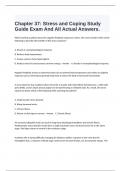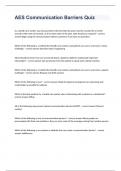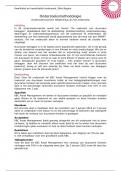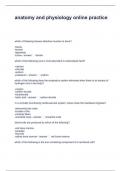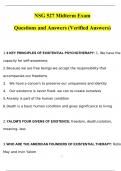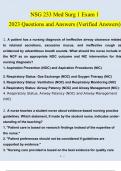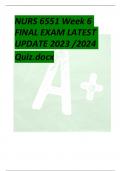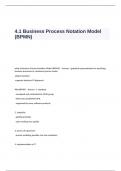Exam (elaborations)
Chapter 37: Stress and Coping Study Guide Exam And All Actual Answers.
- Course
- Institution
When teaching a patient about the negative feedback response to stress, the nurse includes which of the following to describe the benefits of this stress response? A. Results in neurophysiological response. B. Reduces body temperature. C. Causes a person to be hypervigilant. D. Reduces level ...
[Show more]
